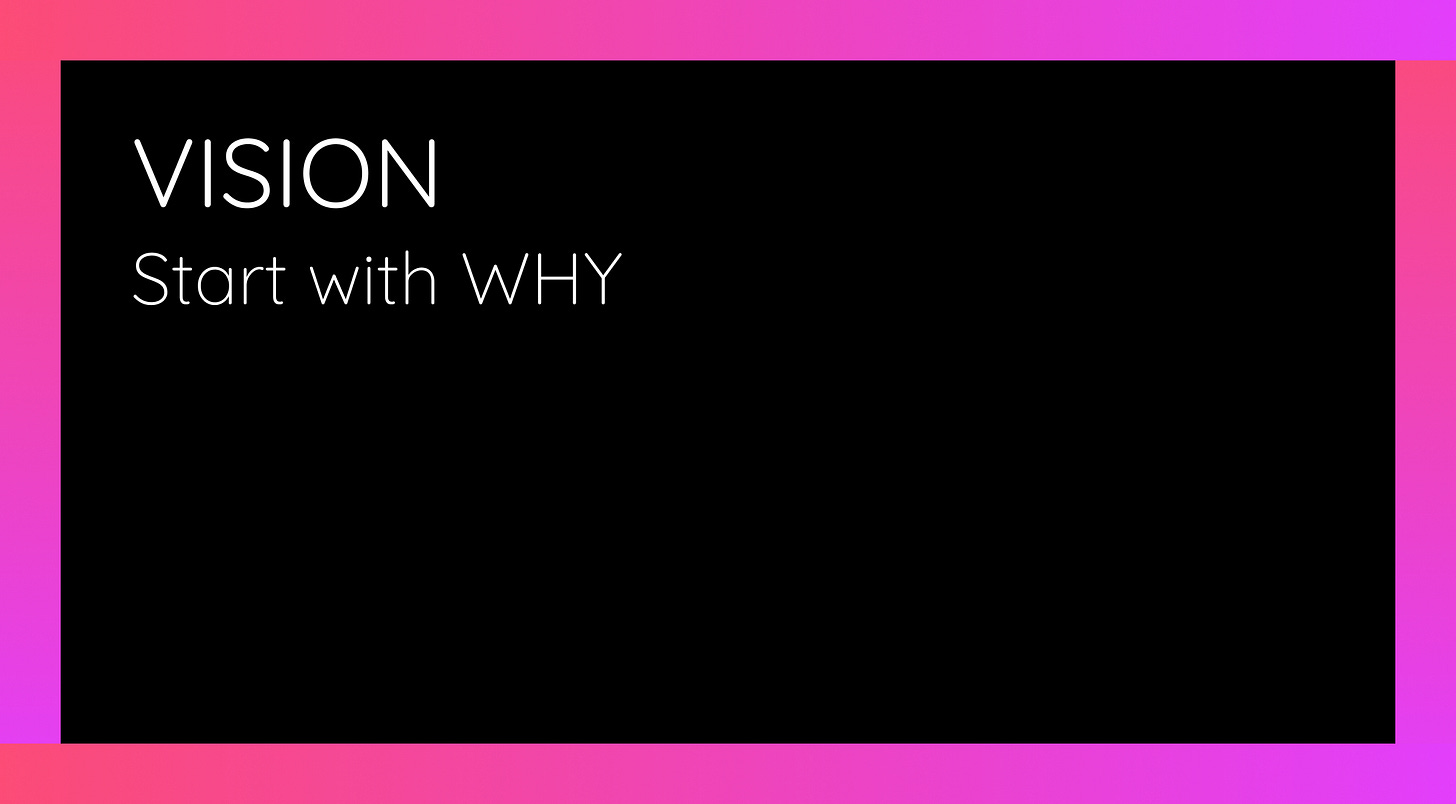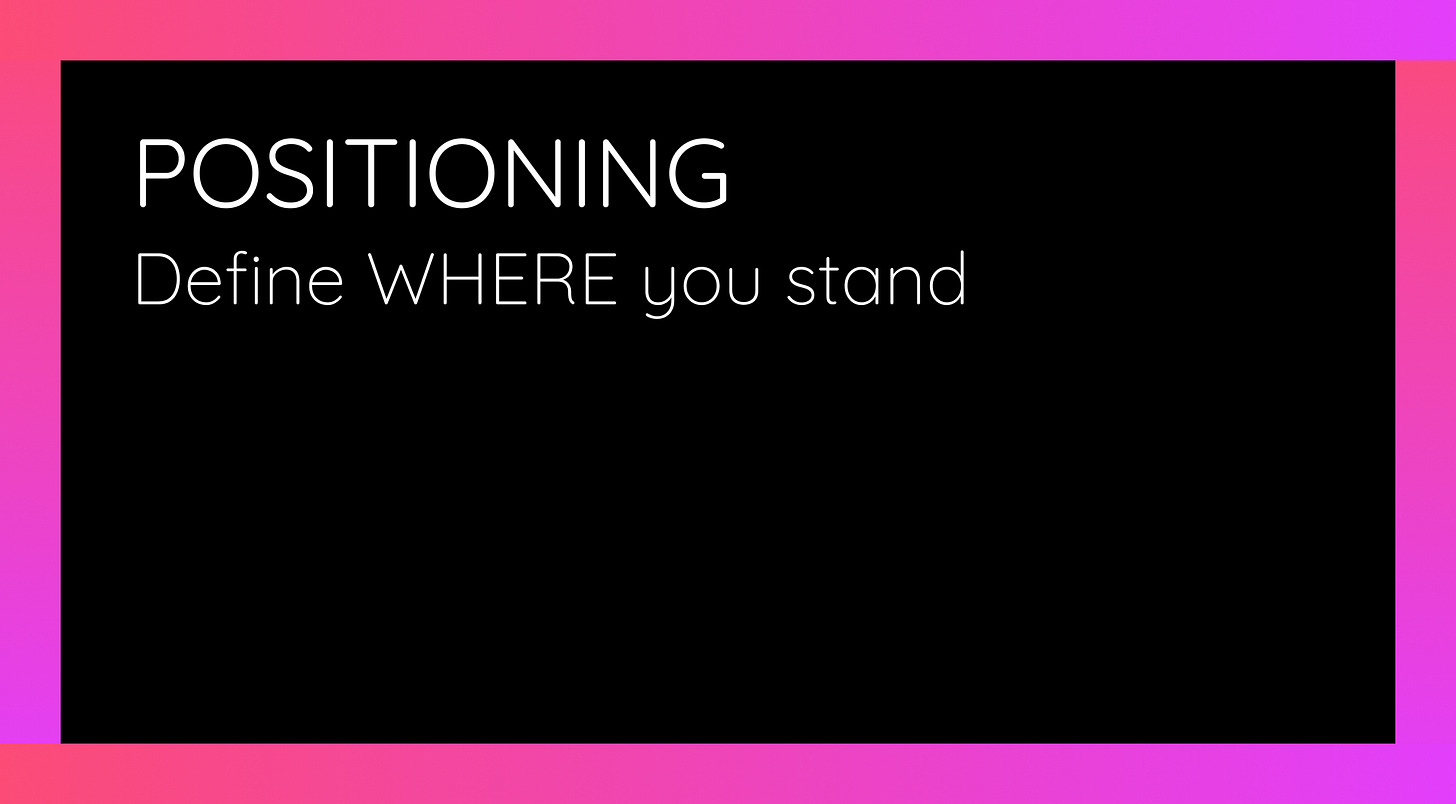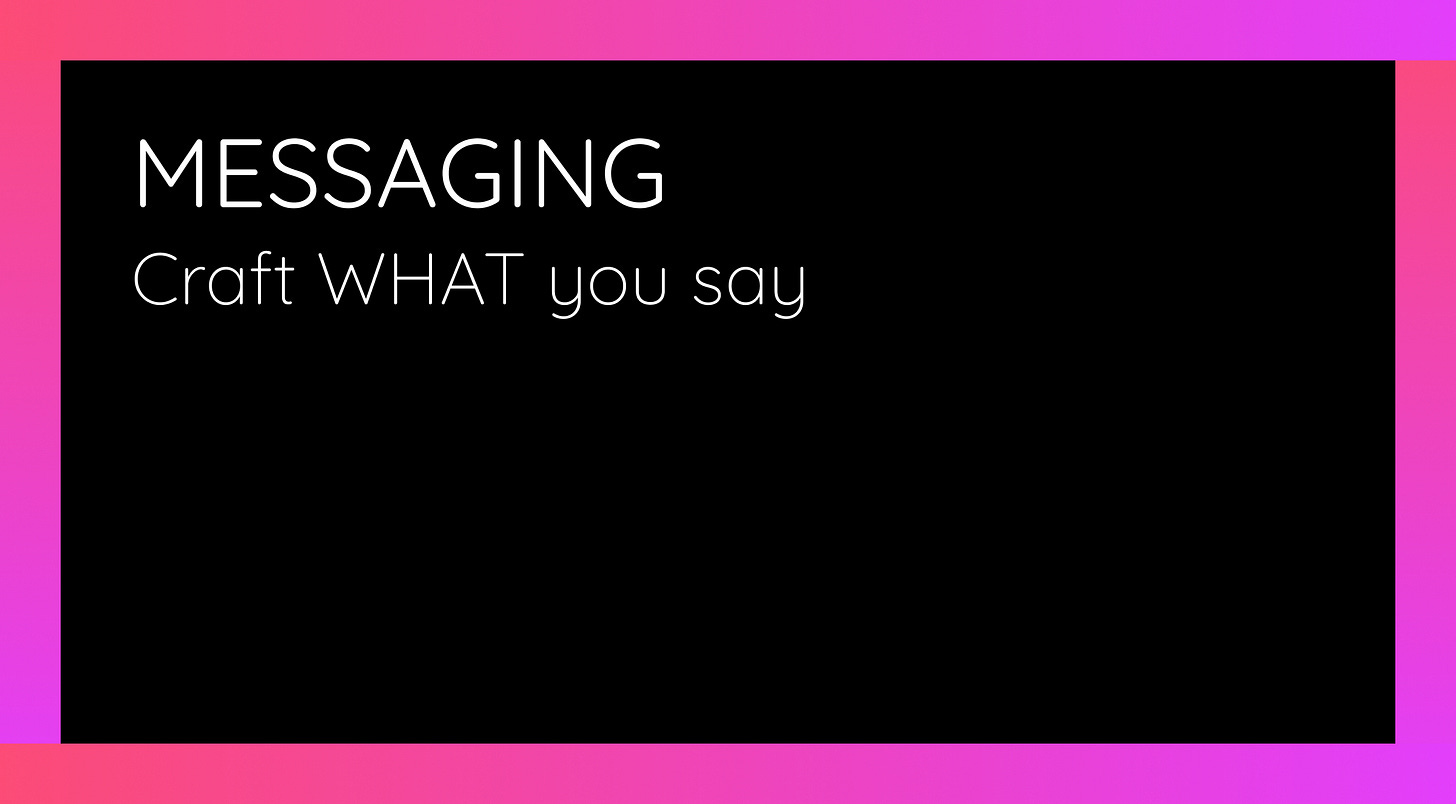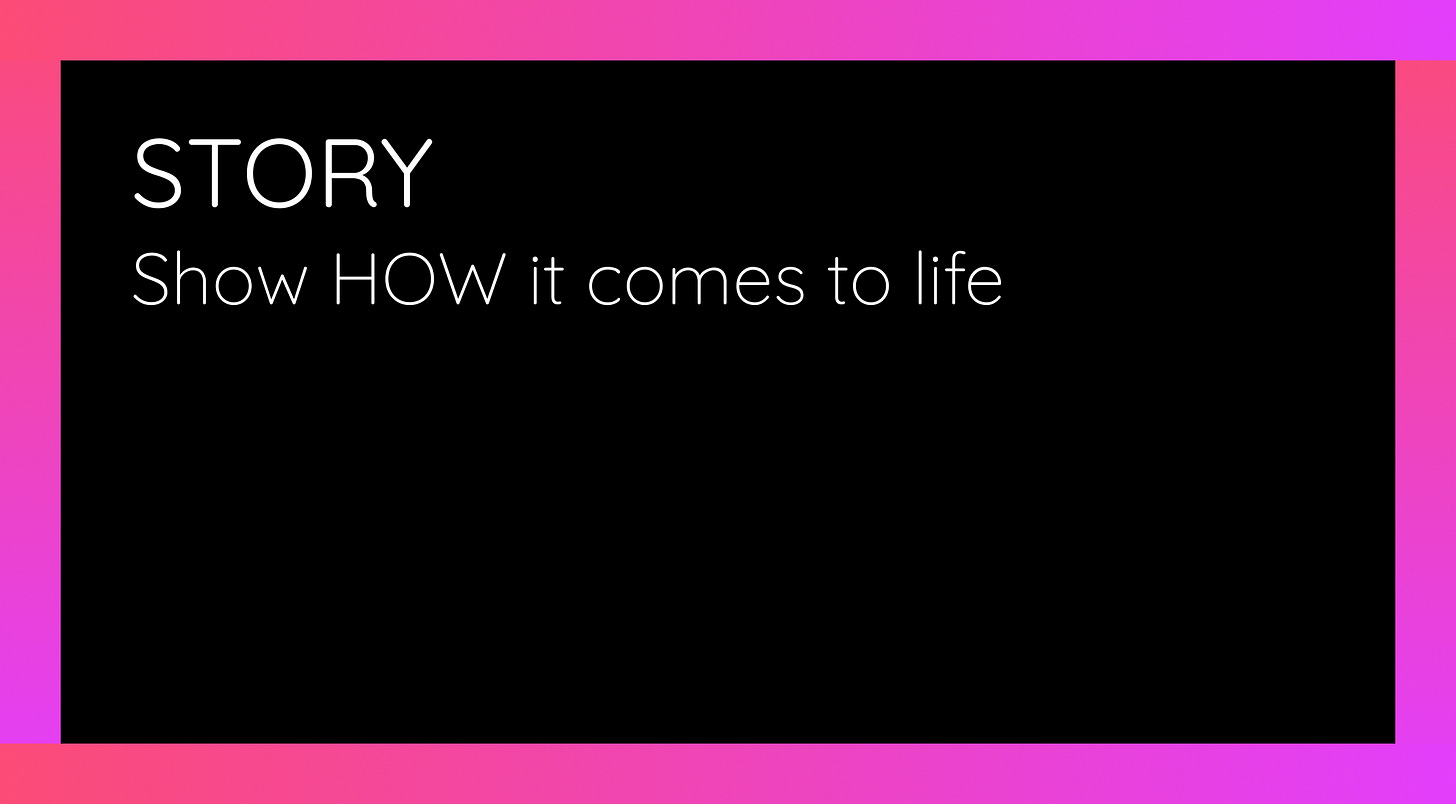Building a Sturdy Brand Foundation
How vision, positioning, messaging, and story work together to support your growth. Spoiler: the order matters.
When I meet built world technology founders, one thing never fails to amaze me — their unwavering belief the technology they’ve built is an aspirin, and not a vitamin. This may well be true, but the way they communicate leaves me to think otherwise. What’s more alarming is how often I hear CEOs or CMOs confuse their story, positioning, vision and messaging.
Do they know what each means? The differences between them? How to prioritise them?
Let me break each one down with sector specific examples:
What it is:
The aspirational, long-term goal your company strives to achieve. Vision answers the question, “What change do we want to see in the world?”
Why It Comes First:
Vision defines the purpose behind your company’s existence, providing a foundation for everything else. Without a clear vision, it’s impossible to align positioning or storytelling.
Example:
CarbonCure (a climate tech company reducing carbon emissions in concrete production):
Vision Statement: “To decarbonize the built environment and transform concrete into a climate solution.”
How It’s Used:
Aligns internal teams toward a shared purpose.
Inspires external stakeholders (customers, partners, investors) with a clear “why.”
What It Is:
The unique space your brand occupies in the market. Positioning answers the question, “How are we different, and why should people choose us?”
Why It Comes Second:
Positioning identifies your competitive edge and how your company’s vision translates into practical value for specific audiences.
Example:
Measurabl (the world’s most widely adopted ESG data management solution for real estate):
Positioning Statement: “Measurabl is the world’s most widely adopted ESG data platform, empowering over 1,000 customers across 93 countries representing more than 18 billion square feet of real estate to measure, manage, report, and act on ESG”.
How It’s Used:
Shapes product development to align with market needs.
Directs sales and marketing efforts toward target segments.
What It Is:
Messaging includes the narratives, value propositions, and language used to communicate your positioning to specific audiences.
Why It Comes Third:
Messaging translates your positioning into actionable communication that resonates with your audience and drives engagement.
Example:
Dusty Robotics (a construction tech company that automates building layout processes):
Core Message: “Eliminate manual layout errors with automation—saving time, reducing waste, and improving accuracy on every job site.”
How It’s Used:
Powers marketing campaigns, sales decks, and website content.
Ensures consistency across all communication channels.
What It Is:
Story ties everything together, connecting your vision, positioning, and messaging into a cohesive narrative that inspires and builds trust.
Why It Comes Fourth:
The story provides emotional resonance, making your brand memorable and relatable. It demonstrates how your company’s vision is being realized and why it matters.
Example:
BlocPower (a climate tech company retrofitting buildings for energy efficiency):
Story: “BlocPower is turning aging buildings into sustainable powerhouses, cutting emissions and energy bills in underserved communities across America. Our mission is to bring clean energy to everyone, one building at a time.”
How It’s Used:
Fuels PR campaigns, social media content, and investor pitches.
Creates an emotional connection with stakeholders by showing real-world impact.
Summary of Logical Order
Vision: Define your purpose and long-term goals.
Positioning: Identify your unique market role and competitive advantage.
Messaging: Communicate your positioning in a way that resonates with your audience.
Story: Bring everything together in a compelling, relatable narrative that inspires trust and action.
What do you think? Are companies doing enough to prioritise marketing communications, or are too many falling into the delusion trap?
Let me know in the comments.






